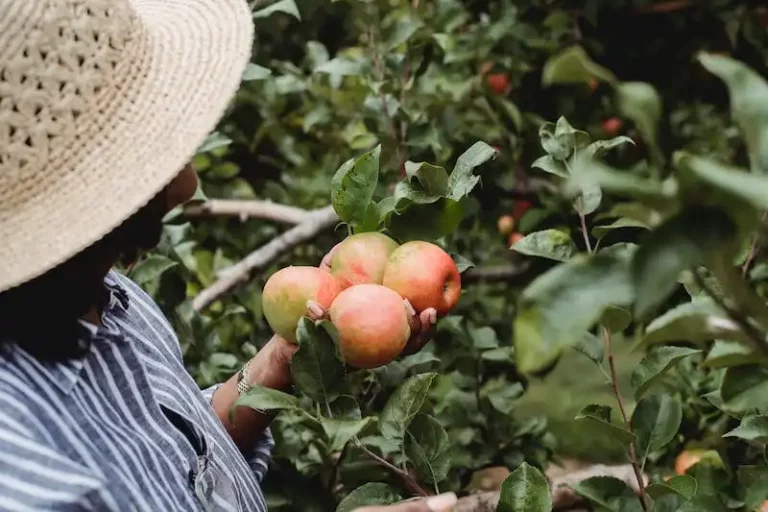Sempervivum plants, also known as houseleeks or hen and chicks, are a type of succulent that are well-loved for their unique and attractive foliage. These plants have rosettes of thick, fleshy leaves that come in a variety of colours and shapes. They are native to mountainous regions and are well-suited to dry and arid climates. Sempervivum plants are easy to care for and can thrive in a wide range of conditions.
When it comes to planting sempervivum plants, it’s important to choose a location that receives plenty of sun, as these plants love bright and direct sunlight. They can tolerate heat and drought conditions, making them a great choice for those who live in hot and dry areas. Sempervivum plants are also deer-resistant, making them a good option for gardens that are prone to deer damage.
The key to successfully growing sempervivum plants is to provide them with well-drained soil. These plants prefer soil that is sandy or gravelly, as this helps to prevent water accumulation around their roots. If you’re planting sempervivum plants in containers, make sure to use a potting mix that is specifically formulated for succulents. This will ensure that the soil drains well and does not become waterlogged.
Watering sempervivum plants can be a bit tricky, as they are drought-tolerant and do not require frequent watering. It’s best to water these plants when the soil is completely dry and to water them deeply. Over-watering can cause the plants to rot, so it’s important to allow the soil to dry out before watering again.
One of the great things about sempervivum plants is that they are relatively pest and disease resistant. However, there are a few common pests that can cause problems, such as aphids and mealybugs. If you notice any signs of pests, such as misshapen foliage or sticky residue, it’s important to take action immediately to prevent the infestation from spreading. There are a number of organic pest control products available that can help to eliminate pests without harming the plants.
In conclusion, sempervivum plants are a great option for those who are looking for low-maintenance and attractive plants that can add a touch of colour to their gardens. With the right care and attention, these plants can thrive in a variety of conditions and provide years of enjoyment. Whether you choose to plant them directly in the ground or in containers, sempervivum plants are sure to be a beautiful addition to any garden.
Planting a Sempervivum Trough
When it comes to planting a sempervivum trough, there are a few important factors to keep in mind. Sempervivums, also known as hens and chicks, are low-growing succulent plants that form rosettes. They can thrive in a variety of conditions and are especially well-suited for trough gardens.
First, select a suitable trough that is wide and shallow. This will allow the sempervivums to spread and create a beautiful arrangement. Make sure the trough has good drainage to prevent waterlogged soil, which can lead to root rot.
Next, choose the right sempervivum varieties for your trough. There are many different varieties available, each with its own unique colors, forms, and habits. Some sempervivums have elongated rosettes, while others grow more compactly. Consider the size and growth habits of the plants to ensure they will fit well in the trough.
Prepare the trough by adding a layer of well-draining soil mix. Sempervivums prefer lean soil, so avoid using a rich or heavy potting mix. You can create your own mix by combining equal parts sand, perlite, and a fast-draining cactus or succulent potting mix.
Before planting, make sure your sempervivums are well-rooted. If they are growing in small pots, gently tease out the roots to encourage growth. Arrange the plants in the trough, spacing them evenly and allowing room for growth. You can also include rocks or other decorative elements to enhance the visual appeal of the trough.
Once the plants are arranged, gently press them into the soil to ensure good contact between the roots and the soil. Water the trough thoroughly and allow the excess water to drain away. Sempervivums are drought-resistant, so be careful not to overwater them.
Place the trough in a sunny location, such as a window sill or a sunny spot in the garden. Sempervivums thrive in bright, indirect light and can tolerate high temperatures. They are also cold-hardy and can survive in zones where the temperature drops below freezing.
When it comes to care, sempervivums are generally low-maintenance plants. They do not require much fertilizing, as excess nutrients can cause the rosettes to become misshapen or elongated. If your soil is poor, you can top-dress the trough with a thin layer of gravel or mulch to provide some additional nutrients.
Keep an eye out for common pests and diseases, such as aphids or root rot. If you notice any signs of infestation or disease, take immediate action to protect your plants. Regularly inspect the trough and the plants for any signs of damage or stress.
To propagate sempervivums, simply remove the chicks, or offsets, that form around the base of the mother plant. These chicks can be replanted in a new trough or in individual pots. Sempervivums are excellent for rock gardens, container gardens, and living walls.
In conclusion, planting a sempervivum trough is a great way to enjoy the unique beauty of these succulents. With the right care and attention, they can thrive and add a touch of color and texture to any garden or outdoor space.
Advice on how to care for sempervivum plants
Sempervivum plants, also known as hens and chicks, are popular succulents that are easy to care for. Here are some tips to help you keep your sempervivum plants healthy and thriving:
1. Growing Conditions
Sempervivums can be grown in a trough, directly in the ground, or in containers. They thrive in well-draining soil and prefer full sun, although they can tolerate partial shade. Make sure to choose a location where they will receive at least 6 hours of sunlight per day. Different varieties of sempervivums come in various colors and shapes, so select the ones that appeal to you.
2. Watering
Sempervivums are drought-tolerant plants, so they do not require frequent watering. Water them sparingly, only when the soil is completely dry. Overwatering can lead to root rot and other diseases, so be cautious. During the winter months, cut back on watering as the plants enter their dormant phase.
3. Fertilizing
In general, sempervivums do not require much fertilizing. They are capable of obtaining all the nutrients they need from the surrounding soil. However, if you choose to fertilize, use a balanced fertilizer with a low nitrogen content. Apply the fertilizer sparingly, following the instructions on the product packaging.
4. Pests and Diseases
Sempervivums are generally resistant to common pests and diseases. However, they can be susceptible to rot if they are overwatered or exposed to prolonged periods of rain. To prevent rot and fungal diseases, ensure that the soil is well-drained, and provide adequate air circulation. If you notice any signs of pests or diseases, treat the affected plants with appropriate products to protect the rest of your collection.
5. Winter Care
Sempervivums are cold-hardy plants and can survive freezing temperatures. However, if you live in an area with extremely cold winters, it is advisable to provide some protection. Mulching around the plants can help insulate them and prevent damage from frost. If you are growing sempervivums in containers, you may want to bring them indoors or to a sheltered location during the winter months.
By following these care tips, you can enjoy the beauty of sempervivum plants in your garden. With their low-maintenance requirements and excellent resistance to pests and diseases, they are a great choice for both beginner and experienced gardeners.
Sempervivum
Sempervivums, also known as hens and chicks, are small succulent plants that are resistant to drought and can thrive in a variety of conditions. Here, we provide advice on how to care for these beautiful plants.
Sempervivums, or hens and chicks, are excellent plants for rock gardens, troughs, and containers. They can be grown in the front of your garden, as they are attractive and require minimal maintenance. Sempervivums come in a variety of colors and shapes, making them a popular choice for both novice and experienced gardeners.
Sempervivums are tolerant of various soils, but they do best in well-draining, sandy soils. If your soil is heavy and retains moisture for too long, adding mulch or gravel can improve drainage. Sempervivums prefer full sun exposure, but they can tolerate some shade. In hot climate zones, they may benefit from afternoon shade.
When planting sempervivums, place them within a few inches of each other to encourage the plant to form colonies. This will create a beautiful and full display of rosettes. Sempervivums are often grown in pots or in the ground, and they can also be used as ground cover in between stepping stones or in rock gardens.
Water sempervivums regularly, but be careful not to overwater. These plants are succulents and are adapted to dry conditions, so they can tolerate periods of drought. They are also deer resistant, making them an excellent choice for gardens with deer problems. In the winter, sempervivums are able to withstand freezing temperatures and snow.
To keep your sempervivums healthy and looking their best, it is important to fertilize them regularly. Use a balanced fertilizer formulated for succulents, following the instructions on the packaging.
Sempervivums are easy to propagate and can be divided in the spring or early summer. Simply remove the offsets, or “chicks,” from the main plant and replant them in a new location. This will allow your sempervivums to multiply and fill in any empty spaces in your garden.
In conclusion, sempervivums are a beautiful and low-maintenance plant that can add color and texture to any garden. With the right care and attention, these plants will thrive and provide you with years of enjoyment.



